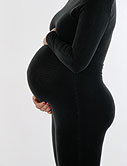- Navigating Your Midlife Crisis: Embracing New Possibilities
- City Raccoons Showing Signs of Domestication
- Mapping the Exposome: Science Broadens Focus to Environmental Disease Triggers
- One Week Less on Social Media Linked to Better Mental Health
- Your Brain Changes in Stages as You Age, Study Finds
- Some Suicide Victims Show No Typical Warning Signs, Study Finds
- ByHeart Formula Faces Lawsuits After Babies Sickened With Botulism
- Switch to Vegan Diet Could Cut Your Greenhouse Gas Emissions in Half
- Regular Bedtime Does Wonders for Blood Pressure
- Dining Alone Could Mean Worse Nutrition for Seniors
Decrease Seen in Epidural-Related Complications for C-Sections


Expectant mothers hoping to stay awake during a cesarean-section delivery can find comfort in the latest study on epidurals and spinal blocks: Complications from those anesthetic procedures dropped 25 percent over 10 years.
“Over the last two decades, obstetric anesthesia providers have focused on improving the quality and safety of care provided to expectant mothers while providing pain relief during labor and safe anesthesia for cesarean delivery,” the study’s lead author, Dr. Jean Guglielminotti, said in a news release from the American Society of Anesthesiologists (ASA). Guglielminotti is a postdoctoral research fellow at Columbia University Medical Center, in New York City.
Epidurals and spinal blocks are medications injected into or around the spinal cord, which are used to numb parts of the body from pain, according to the U.S. National Institutes of Health. Epidurals are preferred during most C-sections, ASA guidelines say. But, in some emergency situations, general anesthesia (which makes you unconscious) may be needed, the ASA points out.
The study included information from more than 785,000 C-sections. The operations were done in New York state hospitals between 2003 and 2012. The researchers looked at information on a woman’s age, the type of anesthesia she was given and the outcome of the deliveries.
In 2003, 29 percent of expectant mothers had C-sections. By 2012, it was 35 percent, the study found. The researchers noted that the number of women older than 40 and women with pre-existing health issues undergoing a C-section also went up. Despite these increases, the overall in-hospital death rate following C-section delivery fell substantially, the research revealed.
More than 5,700 women had at least one anesthesia-related complication during the study period. Among the women who received an epidural during a C-section, the overall rate of both major and minor anesthesia-related complications fell. In 2003, the rate was 8.9 per 1,000. In 2012, it was 6.6 per 1,000, the study found.
“Women giving birth by cesarean delivery are generally at an increased risk for experiencing complications from anesthesia compared to women who deliver vaginally. However, our research shows anesthesia-related outcomes in cesarean deliveries have significantly improved,” Guglielminotti said.
There was no decline in complications associated with C-sections performed under general anesthesia, the findings showed.
Meanwhile, the rate of complications around the time of surgery that weren’t linked to anesthesia increased 47 percent over the decade. The fact that more women have serious pre-existing medical conditions before having a C-section may help explain this rising trend, the researchers suggested.
“Our research highlights the importance and success of intervention programs to improve obstetric anesthesia care. This is all the more important with the high cesarean delivery rate in the U.S. and the increase in maternal age, chronic maternal diseases and high-risk pregnancies,” Guglielminotti said.
The study was published in the Oct. 8 online edition of Anesthesiology.
More information
The American Society of Anesthesiologists has more about anesthesia during childbirth.
Source: HealthDay
Copyright © 2025 HealthDay. All rights reserved.










